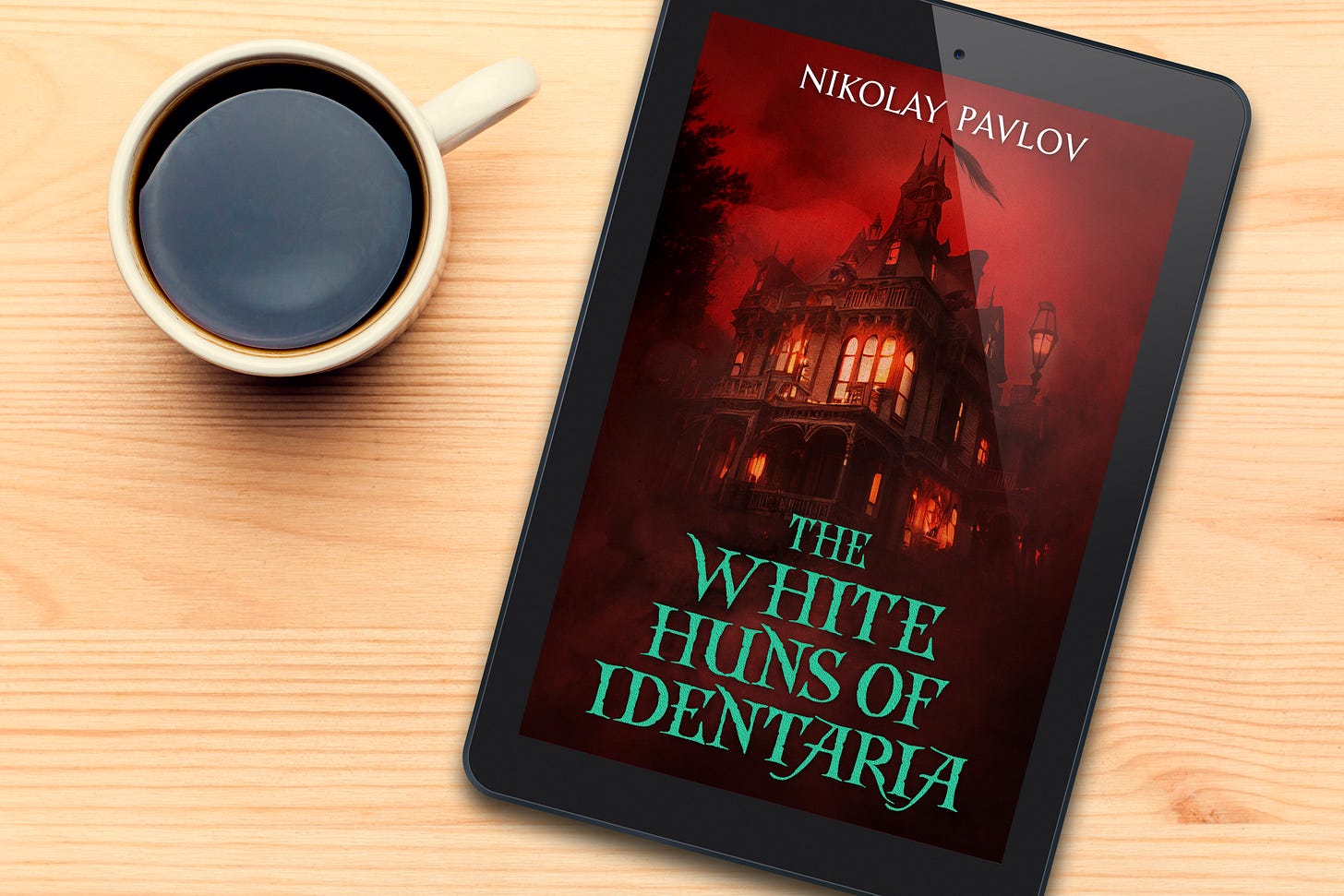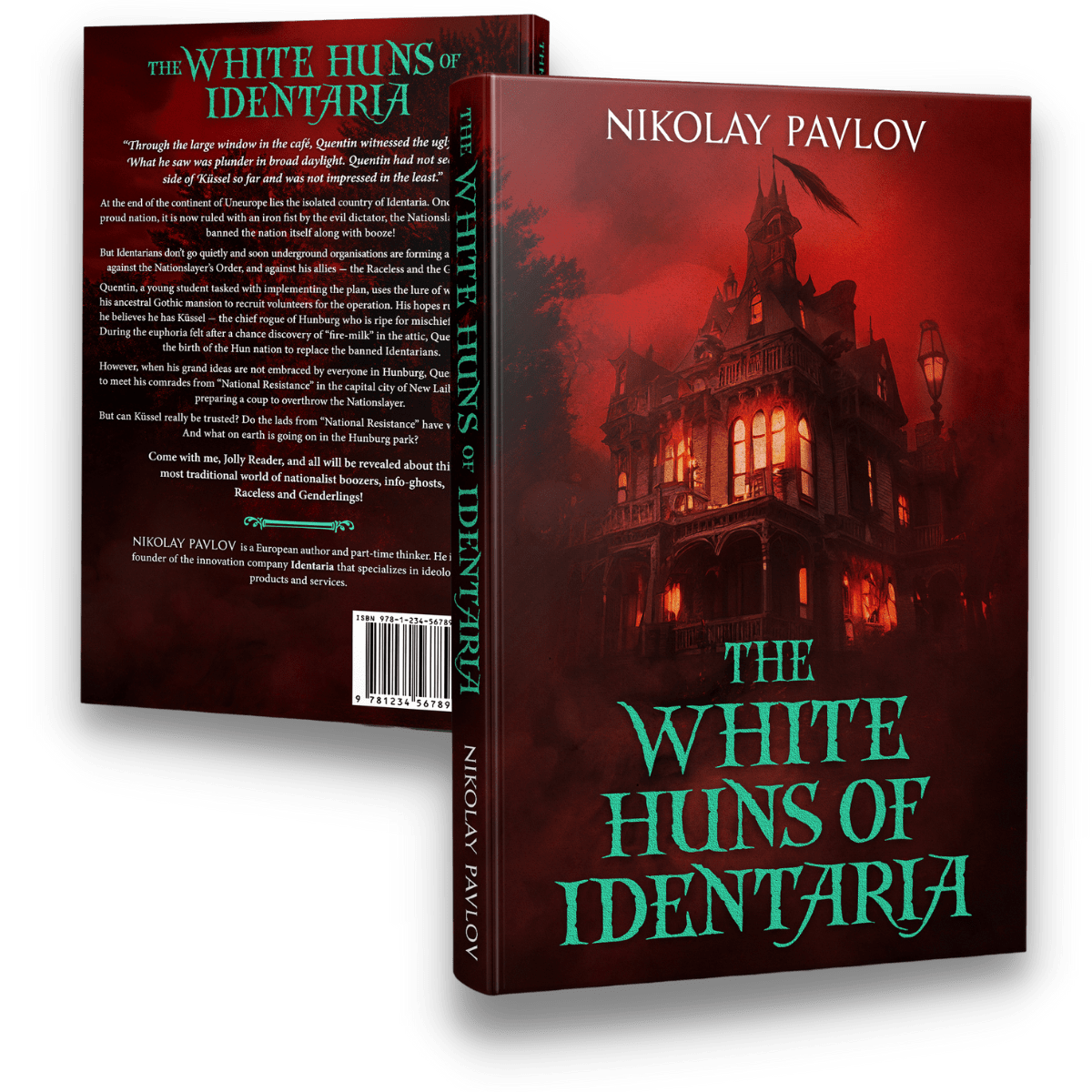Gothic Fantasy meets Political Stagecraft: The White Huns of Identaria
A review of Nikolay Pavlov’s “The White Huns of Identaria” (2023), which weaves together Gothic fantasy, myth and folklore, and political conspiracy to paint a picture of the life-or-death struggle for national identity.
Disclaimer: Arktos Media does not condone violence in any way. This review is for educational purposes only.
Nikolay Pavlov’s The White Huns of Identaria is the latest entry into the genre of ethno-nationalist fiction, arguably comparable to William Lind’s Victoria, William Luther Pierce’s The Turner Diaries, or the novels of Harold Covington. Published in 2023, this self-published novel blends speculative fiction, Gothic fantasy, and political rumination into a strikingly original narrative. Framed with literary rigor and put forth with a strong command of language, Pavlov has created a book that is both a literary experiment and a provocation, challenging readers to consider the relationship between myth, identity, and resistance.
At the heart of the story lies Identaria, a fictional country oppressed by the mysterious figure of “the Nationslayer,” who has outlawed the Identarian national identity and even banned alcohol. Pavlov brings the provincial town of Hunburg vividly to life, its snowy landscapes anchored by a Gothic mansion with gargoyles and griffins, a looming clock tower hiding cryptic secrets, and rituals drawn from deep folk traditions. The folkloric texture is particularly striking, enriched by mythic figures such as the god Identhor and heroes like Bat Organa and the Green Hero. This cultural depth makes the world of Identaria feel authentic and lived-in, and the prose often soars to Gothic grandeur, especially in descriptions like the pilgrimage to Bat Kuber’s grave.
The narrative follows Quentin, a philosophy student who inherits his ancestral mansion in Hunburg and becomes entangled with an underground organization known as “The Warriors of Identhor.” His attempt to forge a new identity for his people, the Hun nation, drives the story forward, culminating in the planning of “Operation Chandala.” Yet, this is only one strand of the multi-layered novel. Pavlov interweaves a coup attempt in the capital, romances, mystical prophecies, and supernatural visions into a colorful mosaic. The scope of the story is ambitious and reveals an author intent on crafting more than mere agitprop: this is a novel with genuine literary aspiration.
As you may have seen above, a disclaimer was included at the beginning of this review regarding violence. Although Pavlov presents Identaria as “a concept development and experimentation project which seeks to enhance the peace-building potential of European nationalism,” it is evident that there is no distancing from the theme of violence in this fictional conceptualization. Violence is central to the plot (“Operation Chandala” and the coup attempt). Contextually, the violence arises from ethnic conflict under authoritarian rule: the banned Identarian nation planning resistance against the “Nationslayer’s” regime. Quentin and his comrades are depicted as thoughtful, cultured, and deeply human, but they are also the perpetrators of extreme violence throughout the novel. The reader is left wondering whether Pavlov employs violence as a vehicle to the tensions of character development and national oppression, or is instead — more likely — romanticizing violence as part of a heroic struggle of national resistance.
The novel’s intellectual scaffolding strengthens this effect. Pavlov invokes thinkers such as Julius Evola and Nietzsche, along with echoes of Beowulf, the Volsung Saga, and other mythic sources. These references are not treated as dry academic insertions but as living ideas that move the characters’ worldview. They demonstrate how philosophy, myth, and epic can be mobilized in modern struggles for identity and power. Regardless of whether the interpretations are faithful or distorted, the result is a deep-running cultural resonance that plunges historic and esoteric names and legacies into playing out in the action unfolding in Identaria.
Equally intriguing is the novel’s tonal ambiguity. It is never entirely clear whether Pavlov is offering satire, sincerity, or an enigmatic blend of both. At times, the speeches of the characters read like earnest ideological declarations; at others, their extremism seems almost surreal. This ambiguity keeps the reader engaged, prompting reflection rather than prescribing conclusions. The unresolved ending deepens this effect, leaving readers unsettled and reflective rather than comforted by a neat moral resolution or happy ending.
Evident throughout the book is the command of atmosphere, structural ambition, and folkloric imagination, which strive to elevate the work above reductive categorization. Even tonal shifts into dark humor serve to enrich the narrative’s texture, giving it a lively and unpredictable tempo. One particularly haunting example is Quentin’s attempted suicide, interrupted by a surreal battle with the “Angel of Suicide.” This moment transforms despair into allegory, dramatizing the struggle between destruction and persistence in a way that transcends realism and opens up the realm of myth as a matter of, quite literally, life and death.
This novel emerges in a cultural moment where questions of nationalism, identity, and political violence are at the forefront of public debate. Its engagement with these issues through myth, fantasy, and the glorification of violence ensures that it will be a controversial work. But the controversy is part of its value: The White Huns of Identaria is a text that refuses comfort or safety. It challenges readers to reflect on uncomfortable realities while also offering a world rich in folklore, philosophy, and atmosphere.
Pavlov has written a work that is ambitious, original, and artistically serious. It is not a book that can be dismissed, nor is it one that will leave readers unchanged. With its mixture of Gothic grandeur, folkloric depth, and intellectual provocation, The White Huns of Identaria is a novel that lingers on long after its final page.




